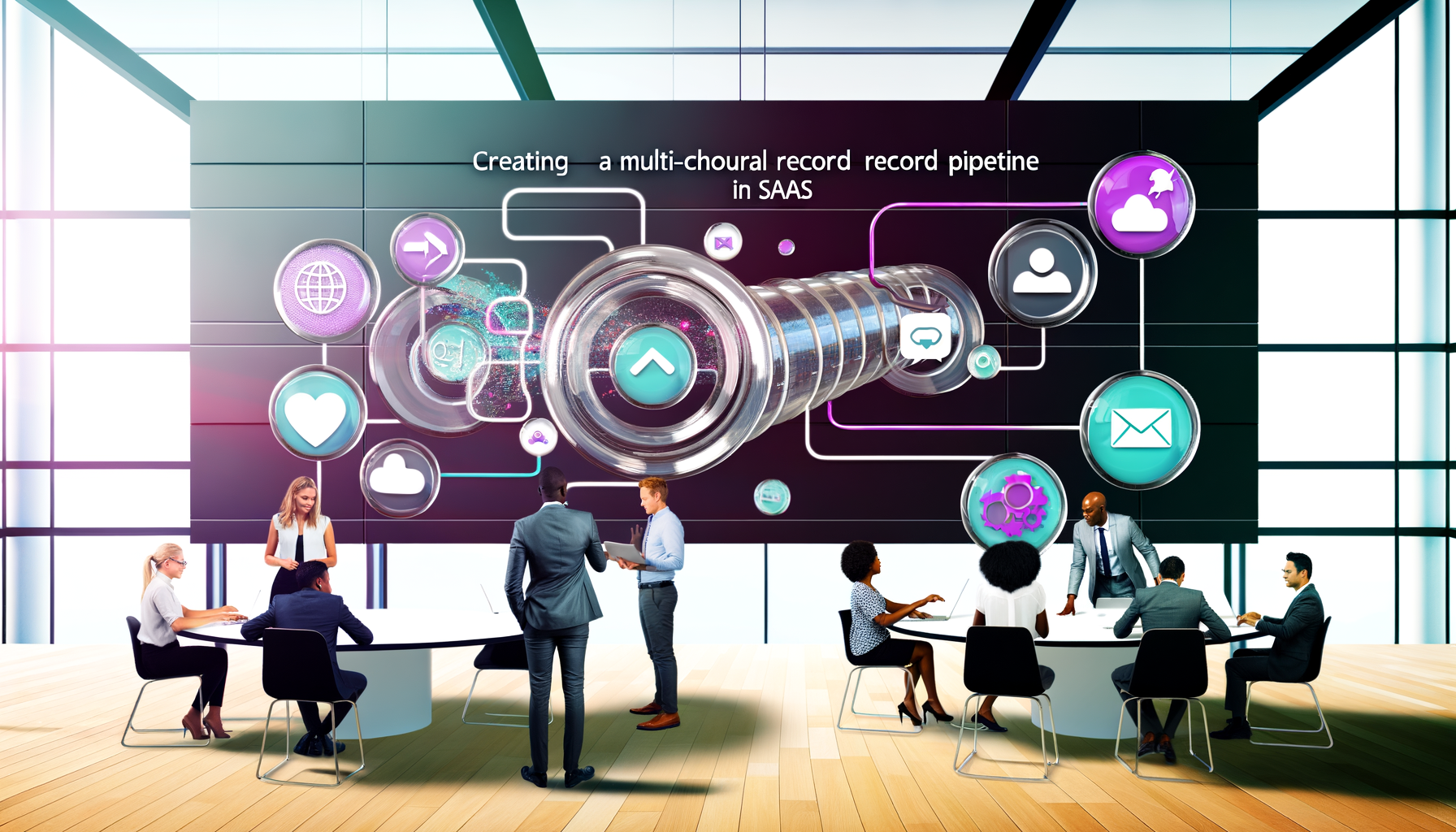
Creating a Multi-Channel Record Pipeline in SaaS
In the fast-paced world of Software as a Service (SaaS), efficiently managing data from various channels is crucial. Yet, building a multi-channel record pipeline that intelligently sorts and stores information from different sources like emails, WhatsApp, and others often seems daunting. Throughout my journey, I’ve found ways to create seamless systems within SaaS applications, enhancing productivity and scalability. Let’s delve into how you can craft a multi-channel record pipeline that capitalizes on smart pipelines and robust SaaS architecture.
The Essentials of Multi-Channel Upload in SaaS
When we speak of a multi-channel upload system, we’re talking about a mechanism that can ingest and process data from diverse communication channels, thus maintaining a centralized data repository. It’s a necessity for any SaaS solution aiming for comprehensive data management. The most common channels often include:
- Emails: One of the oldest yet most prevalent forms of digital communication, packed with valuable user data.
- WhatsApp and Other Messaging Apps: Increasingly popular for customer service and interactions, offering real-time communication insights.
- Web Forms and APIs: Directly collecting structured data, making it easier to categorize and analyze.
Developing a system that handles these sources with agility demands a strategic approach—something that’s pivotal in modern SaaS product architecture.
Steps to Build an Intelligent Record Pipeline
Creating a smart record pipeline begins with a clear understanding of the desired outcome. Whether aiming for increased efficiency or customer satisfaction, the goal must guide each technological choice. Here’s the pathway I recommend:
1. Define Your Data Sources and Needs
Start by identifying where your data originates. Consider mapping out each channel’s data type and collection methods. For instance, email traffic might hold different metadata compared to WhatsApp conversations. Knowing your data’s landscape informs how you’ll design the ingestion process.
2. Implement an Ingestion Layer
Your ingestion layer is the first point of contact between raw data and your SaaS platform. It needs to be adaptable to different formats—texts, images, documents—and capable of real-time data fetching. Technologies like serverless functions or message queues can be employed here for scalability.
3. Utilize Middleware for Data Cleaning and Transformation
Raw data may be rife with noise; hence, cleaning and transformation are vital before storage. Middleware acts as a filter, refining incoming data and converting it to a format compatible with your existing databases. Employing ETL (Extract, Transform, Load) processes ensures only quality data enters the system.
4. Design an Intelligent Storage System
Once transformed, the data should be seamlessly integrated into your SaaS architecture’s storage. Opt for databases that support auto-scaling and offer rapid access, like NoSQL solutions, particularly if you anticipate fluctuating loads. This ensures data retrieval is swift and efficient, no matter how complex the query.
Leverage Automation and AI for Smart Pipelines
Driving the efficiency of your multi-channel upload system isn’t just about technological infrastructure. Automation and AI play a significant role in making pipelines truly smart. Implement machine learning algorithms to categorize and auto-sort incoming data based on identified patterns. Automated workflows can trigger actions—such as assigning tasks or escalating issues—immediately upon data ingestion and classification.
Ensuring Security and Compliance
Security cannot be an afterthought in SaaS record pipelines. With data flowing from multiple channels, ensure compliance with regulations like GDPR or CCPA. Encrypt sensitive information and employ robust user authentication protocols. Regular audits and security assessments are essential in upholding the integrity of your record pipeline.
Conclusion
Developing a multi-channel record pipeline tailored for SaaS platforms is no longer a luxury; it’s a necessity in today’s interconnected digital ecosystem. By aligning technologies with our needs and optimizing through automation and AI, we can achieve seamless and intelligent data management systems.
As we continue to navigate the evolving landscape of SaaS, understanding and constructing effective product architectures become imperative. Keep exploring and innovating, and feel free to connect with me for further insights on optimizing SaaS architecture or share your thoughts on your unique challenges in building multi-channel record pipelines.
